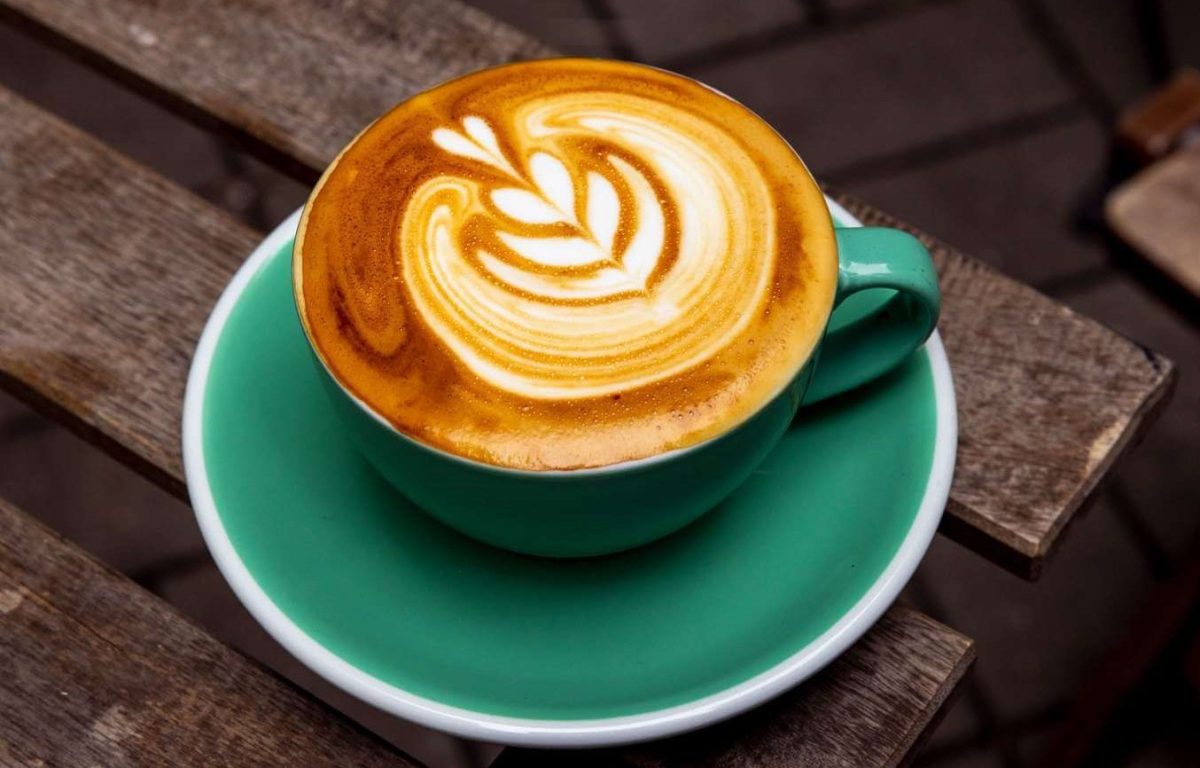In the world of coffee, an extensive menu of options can often leave even the most avid caffeine enthusiast feeling perplexed. Among the choices, three espresso-based beverages are frequently at the center of the coffee connoisseur’s dilemma: the Flat White, the Latte, and the Cappuccino. While they may all seem to share a joint base of espresso and milk, each drink possesses unique characteristics, flavor profiles, and cult followings.
In this article, we embark on a flavorful journey through the nuances of coffee culture to unravel the mysteries behind the Flat White, the Latte, and the cappuccino. We’ll explore the origins of these beloved brews, dissect their ingredients and ratios, and delve into the diverse ways they are prepared and enjoyed worldwide.
Whether you’re a seasoned coffee lover or someone looking to enhance their morning coffee routine, understanding the distinctions between these espresso-based delights will help you navigate the menu confidently and savor every sip. So, grab your favorite mug, prepare to indulge in coffee, and explore the delightful differences between Flat Whites, Lattes, and Cappuccinos.
What is a Flat White vs Latte vs Cappuccino, and Easy 4 Step Recipe:

What is a Flat White: The Beverage Explained
A Flat White is a general espresso-based coffee drink created in Australia and New Zealand, although its exact origins are a debate between the two countries. This drink has gained worldwide popularity for its exclusive combination of tastes and textures, making it a favorite choice for coffee enthusiasts seeking a balanced and velvety coffee experience.
Key characteristics of a Flat White:
1. Espresso Base:
Like other espresso-based drinks, a Flat White begins with a shot (or sometimes two). The espresso forms the foundation of the beverage, providing an intense and concentrated coffee flavor.
2. Steamed Milk:
Its milk preparation sets Flat White apart from other coffee drinks. A Flat White features velvety, microfoam milk instead of the frothy and airy milk of a cappuccino or the mostly steamed milk of a latte. The milk is carefully steamed to create a creamy texture that blends seamlessly with the espresso.
3. Microfoam:
The hallmark of a Flat White is its microfoam, achieved by carefully texturing and steaming the milk. This microfoam is a smooth and finely textured foam that adds a silky mouthfeel to the coffee without the large, airy bubbles found in a cappuccino.
4. Equal Parts:
Regarding the milk-to-espresso ratio, Flat White typically contains equivalent parts of espresso and steamed milk, creating a balanced and harmonious blend of flavors. This balance allows the coffee’s rich notes to shine while providing a creamy and satisfying overall experience.
5. Latte Art:
Baristas often take pride in creating intricate latte art on top of a Flat White. This artistry adds an aesthetic dimension to the drink, enhancing the coffee-drinking experience.
6. Flavor Profile:
The flavor of a Flat White is characterized by the firm, bold taste of espresso, complemented by the sweetness and creaminess of the steamed milk. It strikes a harmonious balance between these elements, resulting in a smoother and less intense coffee flavor than a straight espresso shot.
Overall, Flat White is prized for its simplicity, delivering a rich coffee experience that’s not overly diluted by excessive milk or overwhelmed by frothy foam. Its smooth and velvety texture, combined with the perfect harmony of espresso and microfoamed milk, has made it a favorite among coffee lovers seeking a well-rounded and flavorful espresso-based beverage.

The History of Flat White:
The history of the Flat White is subject to some debate, with Australia and New Zealand laying claim to its origin. This coffee beverage, known for its unique combination of espresso and silky, microfoamed milk, has become a beloved part of coffee culture worldwide. Here’s a closer look at the history and evolution of the Flat White:
Origins in Australia and New Zealand:
The term “Flat White” is believed to have first emerged in Australia or New Zealand in the 1980s. The exact birthplace of the Flat White remains a point of contention between the two countries, and there is no definitive evidence to settle the debate conclusively.
Australian Claim:
In Australia, some argue that the Flat White was invented in the coffee culture of Sydney or Melbourne. According to this perspective, the Flat White was created as an alternative to the cappuccino, offering a smoother and less frothy milk texture, which appealed to those who preferred a coffee with a more intense espresso flavor.
New Zealand Claim:
New Zealanders also claim the Flat White’s origins, asserting that it was first crafted in Auckland or Wellington. In New Zealand, it’s suggested that the Flat White was developed to respond to the cappuccino’s excessive foam and a desire for a coffee with a more balanced espresso-to-milk ratio.
Evolution and Popularization:
Regardless of its origin, the Flat White began to gain popularity in both countries during the 1980s and 1990s. It was embraced for simplicity, featuring a single or double shot of espresso and velvety, steamed milk, with no chocolate or sprinkled toppings that often accompanied cappuccinos.
International Expansion:
As coffee culture spread globally, so did the popularity of the Flat White. It made its way to the United Kingdom and other parts of Europe and eventually to coffee shops in North America. Many coffee chains and independent cafes began offering Flat Whites on their menus.
Mainstream Recognition:
The Flat White’s popularity continued to grow, and it became a staple in the menus of major coffee chains like Starbucks and Costa Coffee. Its global recognition solidified its status as a classic espresso-based coffee option.
Today, the Flat White remains a favorite among coffee enthusiasts for its harmonious blend of espresso and microfoamed milk. While its exact origins may be a matter of friendly rivalry between Australia and New Zealand, there’s no doubt that the Flat White has left an indelible mark on the world of coffee, offering a balanced and delicious option for those seeking a coffee experience that’s neither too strong nor too milky.

Variations of Flat Whites:
The classic Flat White, with its harmonious blend of espresso and microfoamed milk, has inspired various creative variations and adaptations over the years. These variations cater to different taste preferences and dietary requirements. Here are some popular variations of the Flat White:
1. Flavored Flat White:
This variation adds a touch of flavor to the traditional Flat White by incorporating syrups or extracts. Common choices include vanilla, caramel, hazelnut, or seasonal flavors like pumpkin spice. The flavored syrup is usually added to the espresso shot before steaming and frothing the milk, giving the entire drink a delightful twist.
2. Iced Flat White:
The Iced Flat White combines espresso, cold milk, and ice, perfect for warm weather or as a refreshing pick-me-up. It retains the signature smooth and velvety texture of the Flat White while delivering an excellent and satisfying coffee experience.
3. Coconut Flat White:
To cater to lactose-intolerant or dairy-free coffee enthusiasts, some cafes offer a Coconut Flat White. This version uses coconut milk instead of regular cow’s milk, which imparts a subtle tropical flavor to the drink. Coconut Flat Whites are often made with espresso and steamed coconut milk, creating a dairy-free alternative with a unique taste.
4. Almond or Soy Flat White:
Like the Coconut Flat White, this variation replaces cow’s milk with almond or soy milk, making it suitable for vegans and those with lactose allergies. These dairy-free options offer a nutty or soy-infused flavor to the coffee.
5. Honey Flat White:
A drizzle of honey can add natural sweetness and a delightful floral note to a Flat White. This variation combines espresso, steamed milk, and honey, creating a harmonious blend of flavors that appeals to those with a sweet tooth.
6. Spiced Flat White:
This variation incorporates spices like cinnamon, nutmeg, or cardamom to the classic Flat White. These spices are often sprinkled on the microfoam or mixed into the espresso, lending the drink a warm and aromatic quality. It’s like a coffee hug in a cup.
7. Mocha Flat White:
A fusion of two beloved coffee beverages, the Mocha Flat White combines the elements of a Flat White with the chocolatey richness of a mocha. It typically includes espresso, steamed milk, cocoa powder, and sometimes a touch of sweetener for a satisfyingly indulgent experience.
8. Caramel Macchiato Flat White:
This variation features layers of espresso, steamed milk, and caramel syrup. It combines Flat White’s elegance with caramel’s decadent sweetness, creating a dessert-like coffee treat.
9. Decaf Flat White:
A decaffeinated version is an excellent choice for those who want to enjoy the taste and texture of a Flat White without the caffeine kick. Decaf espresso shots are used, and the drink is prepared like a regular Flat White.
10. Single-Origin Flat White:
Some specialty coffee shops offer Single-Origin Flat Whites, where the espresso is crafted from coffee beans sourced from a specific region or country. This variation highlights the unique flavor profile of the coffee beans, adding an extra layer of complexity to the Flat White.
These variations showcase the adaptability and creativity of coffee culture, allowing coffee lovers to explore a wide range of tastes and qualities while still enjoying the essence of a Flat White. Whether you prefer a classic recipe or one of these inventive variations, there’s a Flat White to suit every coffee palate.

Flat White vs. Latte, Cappuccino, and White Coffee:
Coffee lovers are no strangers to the espresso-based drinks at cafes and coffee shops. Among the favorites, the Flat White, Latte, Cappuccino, and White Coffee each offer a unique twist on the combination of espresso and milk. While they may seem similar, they differ in ingredients, preparation, and flavor profiles. Let’s break down the distinctions between these popular coffee beverages:
1. Flat White:
- Origins: Contested between Australia and New Zealand, the Flat White is known for its precise balance of espresso and microfoamed milk.
- Ingredients: A Flat White typically consists of a shot or two of espresso combined with steamed milk, creating a creamy and velvety texture. It emphasizes a harmonious espresso-to-milk ratio.
- Texture: It features microfoam milk, characterized by fine, velvety bubbles that seamlessly blend with the espresso.
- Flavor Profile: A Flat White offers a strong espresso flavor with a silky, smooth texture and minimal foam. It balances the intensity of espresso and the creaminess of milk.
2. Latte:
- Origins: The Latte hails from Italy and translates to “milk” in Italian.
- Ingredients: A Latte is made with espresso and more steamed milk than a Flat White. It typically includes a layer of frothed milk on top.
- Texture: It features more frothy milk than Flat White, resulting in a creamier and lighter texture.
- Flavor Profile: The Latte leans more toward the milky side, with a milder espresso flavor. The froth on top adds a pleasant contrast in texture.
3. Cappuccino:
- Origins: Cappuccino originates from Italy and is named after the Capuchin friars’ brown robes, resembling the drink’s color.
- Ingredients: A Cappuccino consists of equal parts espresso, steamed milk, and milk froth. This gives it a well-defined layered appearance.
- Texture: It features a significant amount of frothed milk, creating a foamy top layer, a creamy middle layer (steamed milk), and a robust bottom layer (espresso).
- Flavor Profile: Cappuccinos have a strong espresso taste with a rich and creamy texture, accompanied by the airy foam on top.
4. White Coffee:
- Origins: White Coffee is a broader term that can refer to various coffee drinks made with espresso and milk.
- Ingredients: In its simplest form, White Coffee consists of espresso and cold milk or cream. It can be helped hot or iced; the milk-to-espresso ratio can vary widely.
- Texture: The texture can range from creamy to light, depending on the milk or cream used.
- Flavor Profile: White Coffee allows for milk type and sweetness level customization. Depending on the recipe, it may have a mild or strong coffee flavor.
In summary, the key differences lie in the ratios of espresso to milk, the texture of the milk, and the resulting flavor profiles. The Flat White emphasizes a balanced ratio and microfoam milk, offering a strong espresso taste with silky smoothness. The latte leans towards a creamier and milder coffee flavor with frothy milk.
The cappuccino features a well-defined layered structure with strong espresso and abundant foam. White Coffee is a broader term encompassing various espresso and milk combinations, offering flexibility in customization.
Your preference among these delightful coffee choices will depend on your taste for espresso strength, milk texture, and the overall coffee experience you seek.

How to Make a Flat White?
Here’s a simplified 4-step recipe for making a Flat White:
Ingredients:
- 1-2 shots of espresso (about 1-2 ounces)
- 6-8 ounces of steamed microfoam milk
Step 1: Brew Espresso
- Brew 1-2 shots of espresso using your preferred method, such as an espresso machine or Moka pot.
Step 2: Steam Milk
- Steam 6-8 ounces of milk until it’s hot but not boiling. The milk should have a velvety microfoam texture.
Step 3: Combine Espresso and Milk
- Pour the brewed espresso into a coffee mug.
- Gently pour the steamed microfoam milk over the espresso. Aim for a central pour to combine them evenly.
Step 4: Serve and Enjoy
- Your Flat White is ready to enjoy! Combining espresso and microfoam milk should create a balanced and smooth coffee experience.
There is no need for extra steps or ingredients – this recipe keeps it simple and delicious.
Conclusion:
In pursuing the perfect coffee experience, understanding the distinctions between the Flat White, Latte, and Cappuccino opens up a world of flavors, textures, and brewing traditions. These three espresso-based beverages, born from different corners of the globe, have become fixtures in the modern coffee landscape, each with its devoted following.
With its precise balance of espresso and velvety microfoam milk, the Flat White delivers a bold yet harmonious sip that coffee purists adore. Conversely, the Latte embraces creaminess, providing a milder espresso flavor with a frothy crown—a comforting choice for those who favor a mellower coffee experience. Meanwhile, the cappuccino stands tall with its espresso, steamed milk, and airy foam, appealing to those who savor a robust coffee taste and a rich, textural journey.
So, the next time you step into a café, don’t just order a coffee—order your coffee. Consider your palate’s preferences, your craving for texture, and your desired coffee flavor depth. With the knowledge of these three iconic drinks, you can discover the diverse world of espresso-based concoctions, making every coffee break a delightful adventure for your senses.
Ultimately, it’s not just about choosing between a Flat White, a Latte, or a Cappuccino; it’s about savoring the rich tapestry of coffee culture and the endless possibilities it offers to ignite your coffee-loving soul.
FAQs:
Is a flat white better than a latte?
Whether a Flat White is better than a Latte is a matter of personal preference, and there is no definitive answer to which one is superior. The selection between a Flat White and a Latte depends on your taste preferences and what you seek in your coffee experience. Here are some factors to consider when deciding which one is “better” for you:
-
Strength of Espresso Flavor:
- Flat White: Flat White might be the better choice if you prefer a coffee beverage with a more substantial and bolder espresso flavor. It offers a more pronounced coffee taste due to its balanced espresso-to-milk ratio.
- Latte: Latte tends to have a milder espresso flavor because it contains more steamed milk, which dilutes the coffee’s strength. If you enjoy a creamier and less intense coffee, a Latte may be your preference.
-
Texture and Foam:
- Flat White: Flat White features velvety microfoam milk with a smooth texture. It provides a creamy mouthfeel without excessive foam.
- Latte: Latte has more frothy milk on top, which adds a layer of creaminess and can be visually appealing. The frothiness of a Latte may appeal to those who enjoy a textural contrast.
-
Size:
- Flat White: Traditionally, a Flat White is smaller than a Latte. It typically contains one or two espresso shots and a proportionate amount of milk.
- Latte: Lattes are usually more giant, with more steamed milk, making them a suitable choice if you desire a more substantial coffee drink.
-
Preference for Microfoam:
- Flat White: If you appreciate the art of microfoam and enjoy the velvety texture it brings to your coffee, Flat White showcases this feature beautifully.
- Latte: Lattes also include microfoam, but the frothy milk layer on top often overshadows it.
How Many Calories are in a Flat White?
The calorie content in a standard 8-ounce (240 ml) Flat White typically ranges from approximately 120 calories, depending on factors like the type of milk used (whole, reduced-fat, skim, or alternative milk) and any added ingredients like syrups or sweeteners.

